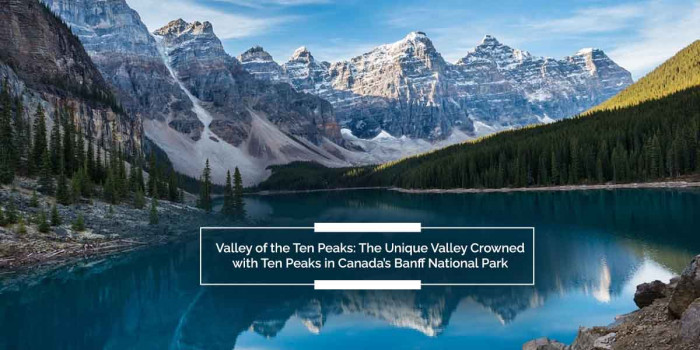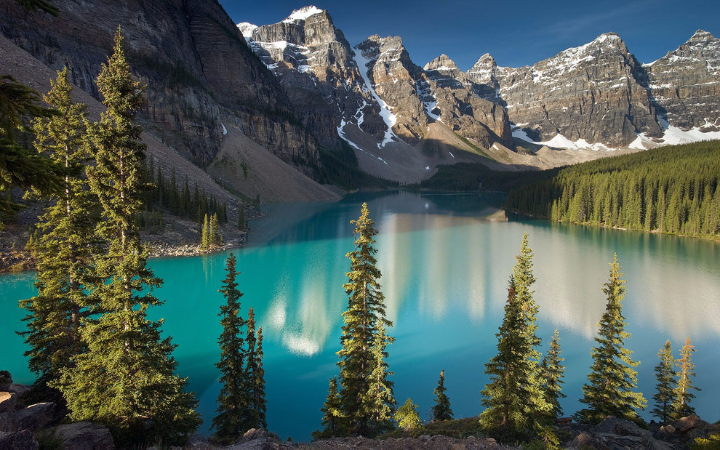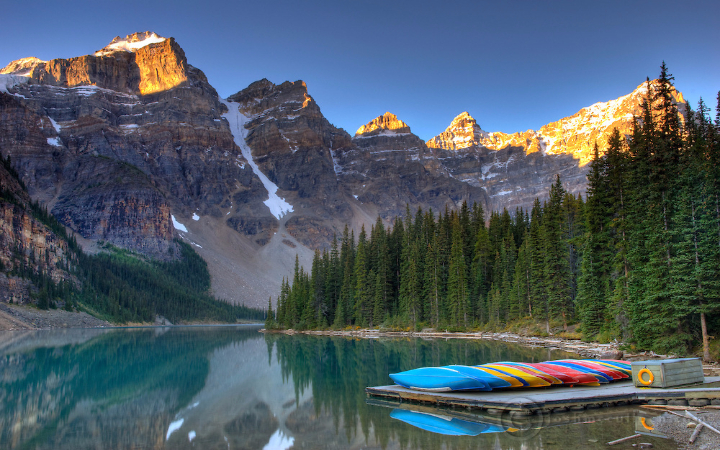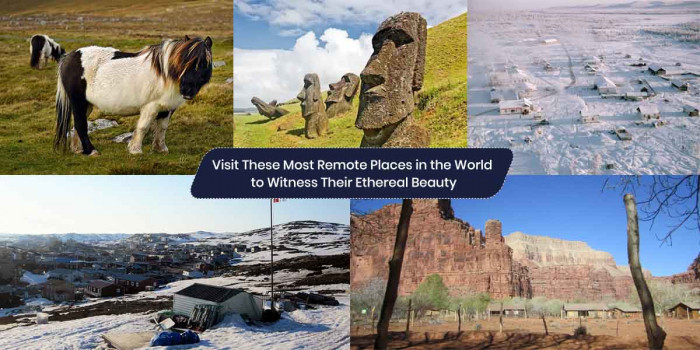The Valley of the Ten Peaks in Banff National Park, Canada is a Natural Wonder
Situated in Banff National Park, the Valley of Ten Peaks is a beautiful valley in the Canadian Province of Alberta. Check out the ten peaks that crown the valley.

It is common to witness one or two peaks within a valley but extremely rare to see ten peaks in one single valley! Well, the Valley of the Ten Peaks (French: Vallée des Dix Pics), as the name suggests, is a valley crowned with ten jagged snowy mountain peaks. It is located on the continental divide in Banff National Park in Alberta, a Canadian province. An incredible wonder of nature, it is also the highest mountain range in the region.
You can reach the valley through the Moraine Lake road near Lake Louis. The deep blue water of glacially-fed Moraine lake lets you see the reflection of the tall mountain tops. Interestingly, this valley of ten peaks appeared on the reverse side of the 1970/69 and 1978/79 Canadian 20 dollar bill and also on a 2 Mountcent.
Let’s know about the history, culture, and nearby attractions of the Valley of Ten Peaks.
Brief History & Culture About the Valley of Ten Peaks

Originally named by an early explorer of the region Samuel Allen, the ten peaks were referred to as using the numerals from one to ten in the Stoney First Nations Language. He may have learned the terms from his Native American guides, who helped him with the horses.
The Nakoda, also called the Stoney Indians, is a tribe having a close cultural and dialect relation with that of the Assiniboine First Nation. They are believed to have parted in the mid-1700s, and they traveled across large parts of the prairies and mountains of western Alberta into British Columbia.
The isolated Valley of the Ten Peaks was Nakoda’s original homeland’s part. Eventually, all except three of the ten mountain peaks were renamed in honor of notable individuals, including Allen. The Allen’s original peak list didn’t include Mount Hungabee, despite it being higher than Wenkchemna Peak, which is an extension of Hungabee.
What are those Ten Peaks, Their Altitude & Original Native Names?

The ten peaks are numbered from east to west as follows:
1. Mount Fay (Original Native name: Heejee) is 10,613 feet high.
2. Mount Little (Original Native name: Num) is 10,131 feet high.
3. Mount Bowlen (Original Native name: Yamnee) is 10,079 feet high.
4. Tonsa (Original Native name: Tonsa) is 10,030 feet high.
5. Mount Perren (Original Native name: Sapta) is 10,010 feet high.
6. Mount Allen (Original Native name: Shappee) is 10,860 feet high.
7. Mount Tuzo (Original Native name: Shagowa) is 10,650 feet high.
8. Deltaform Mountain (Original Native name: Shakhnowa) is 11,234 feet high.
9. Neptuak Mountain (Original Native name: Neptuak) is 10,607 feet high.
10. Wenkchemna Peak (Original Native name: Wenkchemna) is 10,401 feet high.
Other mountain peaks that can be spotted from within the valley are Mount Temple, Mount Babel, and Eiffel Peak. Fay Glacier is developed within Mount Babel, Mount Fay, Mount Little, and Mount Bowlen. The Neil Colgan Hut is a mountaineering destination that could be reached in an 8 to 12-hour long hike along the Perren Route from Moraine Lake.
Kayaking or canoeing in the crystalline, pristine, emerald-hued water of Moraine Lake is something you can’t-miss. Besides sightseeing, photography, walking, and hiking, you can also enjoy camping and climbing in remote areas for extra incentive. Other nearby destinations include Larch Valley, Louise Lake, Sentinel Pass, and Eiffel Lake. A nearby massive glacier develops in the wintertime, and Moraine Lake Road becomes a destination for cross country skiers.
Wrapping Up
So whenever you plan a visit, carry your camera along and take pictures of the beautiful sceneries of this valley of the ten peaks and the beautiful Moraine Lake. We recommend you should go once in your lifetime and watch the stunning views that the valley beholds.
Popular Posts
10 Amazing Cities Built Near or Through Rivers
Rivers have been crucial to human settlements, commercialization, and building cities. This opens opportunities for trading goods and establishing international connections.
Kimberly Campbell
20 Most Futuristic Cities In The World
What do you think about the future? Does it bring thrill in you or terrifies you? What’s your take on high speed trains, miles...
Swati Bhandari
Mystery Of Baigong Pipes - 1,50,000 Old Construction Reveals The Ancient Technology
Baigong pipes are a series of ancient pipes found in and near Mount Baigong located about 40-45 km southwest of the city of Deli...
Kevin Green








